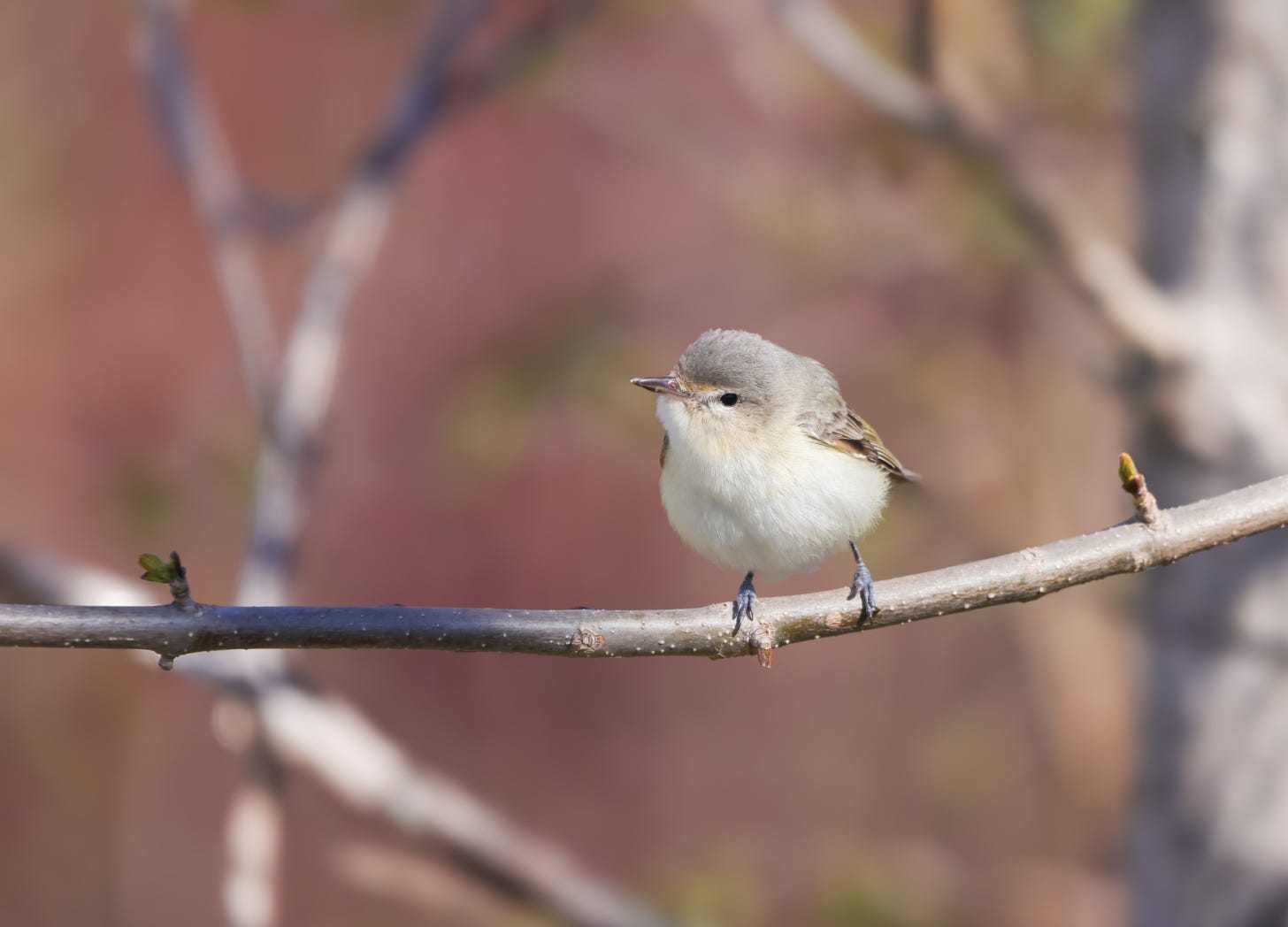Good News: Issue 4
From composting in Newfoundland to planting giant sequoias in Detroit, here are my top picks for the week
The songbirds have been streaming through the city this past week, headed north to their breeding grounds. Ironically, while I was writing my last post on making cities safer for birds, I could hear warblers and sparrows outside, taunting me. Finally, for Mother’s Day, I was gifted the opportunity to go birding.
I headed to Tommy Thompson Park, where I used to band and survey birds. While the landscape and people have changed since I worked there, the warm sunshine, the fresh breeze off the lake, and the music of songbirds were just as I remembered. Tromping through dogwoods and sumacs in pursuit of birds, away from the noise of the city, gave me a much-needed lift.
Finding these environmental good news stories is a bit like birding. The tiniest, most colourful warblers can be elusive and hard to find, but they are there — you just have to slow down and look up. And suddenly you realize they are everywhere.
Newfoundland’s Biggest Mall Is Also the Province’s Biggest Composter
The Avalon Mall food court in St. John’s, Newfoundland doesn’t produce food waste — it creates rich compost for local farmers. Food scraps and paper are fed into an industrial composter, which breaks down and processes organic material in 7-10 days. Every month, an average of 6,000 pounds of food waste gets composted, and at peak season it’s as much as 1,300 pounds every two days. Since launching in October, 2019, the mall has churned out 300,000 pounds of compost — which would have gone to landfill, where it would have simply rotted and produced methane gas. Every 3-4 weeks, Island Compost collects materials, finishes the curing process, then distribute to farms across Newfoundland and Labrador.
Detroit Being Reforested with Giant Sequoias from California
Detroit's Poletown East neighborhood is being planted with giant sequoias—trees native to California. The urban reforestation project, spearheaded by nonprofits Arboretum Detroit and Archangel Ancient Tree Archive, is transforming vacant lots into thriving green spaces. Arborists expect the giant sequoias to reduce air pollution, create shade, soak up stormwater, and sequester carbon dioxide.
The project began in 2020 with the planting of 20 sequoia saplings, and continued on Earth Day 2025, when volunteers planted 100 more. The saplings are clones of two famous Californian sequoias. One is the Amos Alonzo Stagg tree: the fifth largest tree in the world, standing at 243 feet. The other, called Waterfall, had the largest perimeter of any giant sequoia — 140-feet — before it succumbed to a wildfire in 2020.
Although sequoias aren’t native to Michigan, they are thriving in the cool, moist soil — and absence of wildfires. The saplings are roughly a foot tall now, but they are expected to reach 15 feet over the next decade. Arboretum Detroit is also planting roughly 80 other species of trees in the neighbourhood.
UK Launching Plastic Bottle Deposit Program
The UK is set to launch a deposit return scheme (DRS) for plastic bottles and cans in England, Scotland, and Northern Ireland. Starting in October 2027, consumers will pay a small deposit when purchasing single-use drink containers. The money will be refunded upon returning the containers — without need of receipt. This means that people will be able to earn money by helping clean up their communities.
The program aims to reduce plastic litter and boost recycling rates. Each year, people in the UK buy 25 billion drinks in single-use containers, and 6.5 billion of those end up as waste instead of being recycled. Similar programs in European countries have demonstrated success, with average return rates of 87% and notable reductions in litter. Latvia decreased its beach litter by 50% decrease within two years of implementing its DRS.
Innovative Material Removes Phosphorus from Water and Recycles It
Jane Pearce, CEO of Rookwood Operations Ltd., has won a Women in Innovation Award for developing a product that removes phosphorus from water — and recycles it. Engineered from natural materials, the sponge-like substance binds to phosphates (compounds containing phosphorus), which can then be used to fertilize farms.
Phosphorus, which is mined from phosphate rock (unsustainably), is a key component of fertilizer used in conventional agriculture. Phosphorus enters water bodies through agricultural runoff and wastewater, contributing to the overgrowth of algae — which in turn depletes water of oxygen, harms aquatic life, and can contaminate drinking water. This excess of phosphorus is causing a rising trend of algal blooms in water bodies globally.
This innovation serves the dual purpose of restoring the ecological balance of waterways and supplying a sustainable source of phosphorus where it is needed.
U.S. Scientists Join Forces to Continue Climate Work
The American Meteorological Society and the American Geophysical Union have partnered to continue vital climate research independently, ensuring the continuity of peer-reviewed studies on climate impacts. The duo is inviting manuscripts for a “new, first-of-its-kind special collection focused on climate change in the United States.”
The move comes after the Trump administration dismissed some 400 authors and staff of the fifth National Climate Assessment (NCA), which was almost a year into the process of evaluating how climate change is affecting the United States — and how the country can prepare for impacts like extreme heat, flooding, and hurricanes.
“It’s incumbent on us to ensure our communities, our neighbors, our children are all protected and prepared for the mounting risks of climate change,” said AGU President Brandon Jones. “This collaboration provides a critical pathway for a wide range of researchers to come together and provide the science needed to support the global enterprise pursuing solutions to climate change.”
I hope these stories give you a bit of a lift.
Yours for the Greener Good,
Brett



